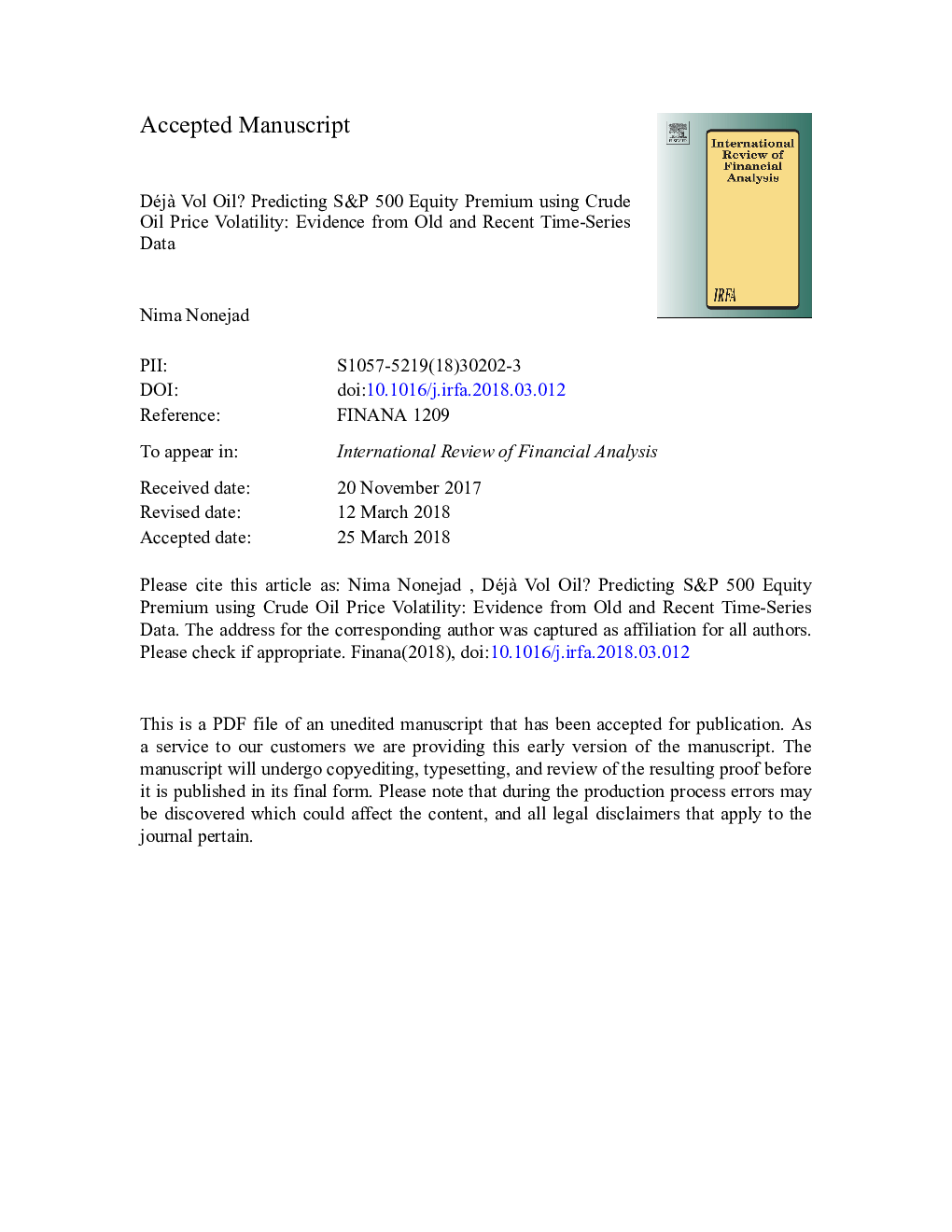| Article ID | Journal | Published Year | Pages | File Type |
|---|---|---|---|---|
| 7355636 | International Review of Financial Analysis | 2018 | 30 Pages |
Abstract
Similar to crude oil price, crude oil price volatility is persistent, heteroscedastic and countercyclical. Therefore, a tendency exists to suspect that both variables would essentially afford similar out-of-sample predictive power, thereby conjuring a sense of déjà vu. We test this hypothesis, and determine to what extent one can improve monthly S&P 500 equity premium predictions by conditioning on crude oil price volatility. We consider data from the late 1800s as well as relatively recent data, and construct a predictive model that accommodates important technical features, namely, (i) A persistent predictor, (ii) Predictor endogeneity, and (iii) Time-varying conditional volatility in the regression innovations. Several key findings are unraveled from our econometric analysis: The predictive regression with crude oil price volatility generates statistically significant more accurate density predictions than its competitor with oil price and the historical average benchmark for the sample, 1984 to 2017. It also provides modest gains in point predictions for this dataset. However, it is more difficult to find evidence that models with oil price/oil price volatility outperform the benchmark for the pre-1900 sample. The additional predictive power afforded by oil price volatility appears to concentrate on the onset of recessions, and the aftermath of the Great Recession. Finally, the predictive impact of oil price volatility on equity premium is linear.
Related Topics
Social Sciences and Humanities
Economics, Econometrics and Finance
Economics and Econometrics
Authors
Nima Nonejad,
